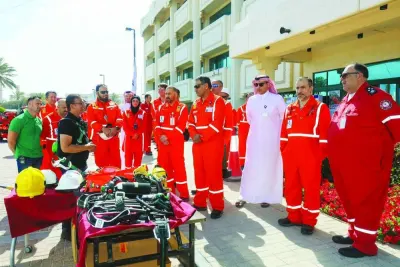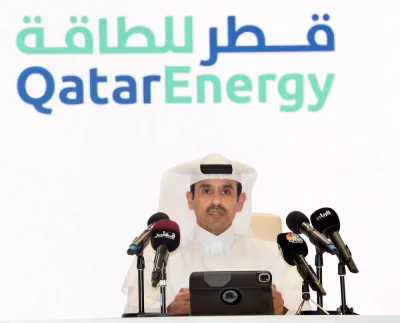Reuters/London
|
|
The partners in Russia’s Yamal liquefied natural gas project are in talks to ship cargoes to Britain and northwest Europe in winter, when heavy sea ice clogs routes to Asia, a Total official has said.
“We’re negotiating with people who have terminal capacity in northwest Europe including the UK at the moment,” said Jacques Besse, vice president of LNG shipping at Total, which is developing Yamal with Russian partner Novatek.
For Britain, Russian LNG shipments could help prevent a recurrence of a recent bout of near-record prices caused partly by inadequate deliveries of pipeline gas and of LNG cargoes from Qatar.
“The intention is to sell part (of the LNG) on the northwest European market and to export (the rest) through a terminal to more valuable markets,” Total’s Besse said in an interview on Thursday.
Under the plan, a fleet of around 14 LNG ice-breaking vessels will deliver Arctic gas from the project offshore northwest Siberia to northwest European terminals, either for eventual onward transport to Asia or for local consumption.
Existing Russian pipelines supply around a quarter of Europe’s gas needs, but the planned Yamal LNG export plant was intended to supply Asian markets, which offer higher prices and have so far received relatively small amounts of Russian gas.
The exact details of how much LNG will be sold to Europe and to which specific companies and terminals will be announced in a few months, Besse said.
Qatari LNG shipments to Britain plunged by 68% in January from a year earlier, according to the latest figures from shipping consultancy Waterborne, and supplies from Yamal could help fill part of that gap.
Exports from Yamal are due to start from 2016 and would deliver to Europe only in winter, when the North Sea Route (NSR) to Asia along Russia’s northern coast becomes impassable.
Most of the winter LNG arriving in Europe will be re-exported by Total and Novatek to clients in Asia, with the remainder sold to utilities that have import rights at UK, Dutch and other terminals in the region.
But the utilities also could decide to re-export the volumes to more attractive markets outside Europe, potentially reducing the benefits of extra supply to domestic consumers.
“Yamal LNG will use the terminals for transfer from ice-breaking ships to standard ships (which are faster and cost less to operate) ... it is the intention of Yamal to sell to its own clients in Asia,” he said.
“The scheme would be through Europe in winter and through the North Sea Route in summer,” he added.
Each of Yamal’s 14 estimated ice-breaking LNG carriers will cost between $185mn and $205mn to build, he said.
The project still faces challenges to get off the ground.
Novatek is lobbying to win the right to export LNG abroad, ending Gazprom’s monopoly as the sole Russian exporter. Russian officials are calling for an expansion of export rights to include other producers.
As for the European route, Prime Minister Vladimir Putin opposes LNG shipments to Europe because it could compete for market share with pipeline supplies from Gazprom.
Thawing sea ice caused by global warming has attracted energy companies to drill in the Arctic Ocean, which is estimated to hold about 20% of the world’s as-yet undiscovered oil and gas, and has revived Soviet-era trade links such as the NSR that halve voyage times to Asia.
In a test in November, Gazprom’s trading arm made the first ever shipment of LNG through the NSR - from Norway’s Snoehvit plant, currently the world’s most northern LNG export plant, to Japan.
Total may follow suit this year by sending its share of the LNG produced at Snoehvit through the NSR to Asia between the months of July and November, when the route is navigable, Besse said.
Shipments from Norway through the NSR to Asia shave nearly 3,000 nautical miles off the alternative Suez Canal trip, bringing potential cost savings and supporting the rationale for building Arctic LNG projects.
The French major will order two LNG tankers within the next two weeks that could, subject to a final decision, be reinforced to handle ice-strewn Arctic seas, Besse said.
The vessels will initially be used to ship LNG from new liquefaction plants under construction in the US, at Sabine Pass in Louisiana, and at Ichthys in Australia.
India’s Chidambaram heads to
Canada, US to woo investors
AFP/New Delhi
India’s finance minister heads to Canada and the US this weekend to seek investment to plug a gaping hole in public finances and raise money to overhaul the nation’s crumbling infrastructure.
The investment roadshows, which kick off in Toronto tomorrow, are the final leg of Finance Minister P Chidambaram’s tour which began in January of major global financial hubs that included Japan, Hong Hong, Germany and Singapore.
Chidambaram — a veteran politician mentioned as a potential prime minister if the embattled ruling Congress party wins the 2014 elections — is being accompanied by top finance ministry and central bank officials.
“This is a very important trip to attract investment,” a senior government official, who did not wish to be named, said yesterday.
“He will interact with top business leaders, pension, insurance and sovereign wealth funds and his government counterparts, talking about what India is doing to increase investment and speed up infrastructure projects,” the official said.
Chidambaram, reappointed to the finance job last year to revive India’s stumbling economy, is slated to leave today on his tour that will also take him to Ottawa, New York and Boston, a finance ministry statement late yesterday said.
His trip comes as Asia’s third-largest economy faces the biggest fall in direct foreign investment (FDI) in over a decade amid waning global risk appetite and domestic growth at a decade-low level that makes India a tough sell.
The FDI slide leaves India dependent on volatile foreign flows into stocks and bonds, that are far more prone to dry up in the event of economic crisis, to fund a record current account deficit.
“The (deterioration in the) quality of flows is concerning,” Nomura economist Sonal Varma said in an investors’ note.
India’s current account deficit hit $32.6bn in the December quarter or 6.7% of gross domestic product (GDP), due to high gold and oil imports and weak exports — far above the central bank’s comfort level of 2.5% of GDP.
The public finances crunch has prompted the government to move more aggressively to seek foreign investment.
Chidambaram, who will finish his trip in Washington where he will attend IMF-World Bank meetings, recently loosened debt market rules to draw more overseas investment to fund the current account deficit and to finance a planned $1tn in projects to overhaul shabby roads, ports and other infrastructure.
Last September, the government also initiated a string of liberalisation measures to widen foreign investor access to sectors such as retail, insurance and aviation.
There are now reports the government may also hike foreign investments caps in telecoms and defence production and Chidambaram has promised a “next generation” of reforms to further pry open the still heavily regulated economy.



